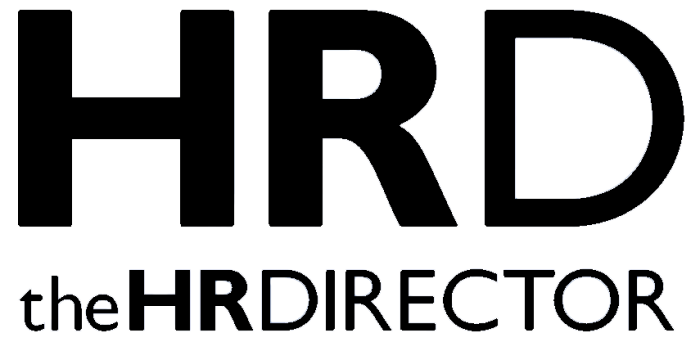The theme for this year’s International Women’s Day was Accelerating Action, which challenges us to go beyond traditional efforts and implement concrete strategies that drive real results. One critical shift is moving from mentorship to sponsorship. While mentorship provides guidance and advice, sponsorship is about action – using influence to propel women into leadership roles.
Michelle Moss, Director: Assessments and Leadership Consulting at Signium Africa, says, “Research consistently shows us that women are often over-mentored and under-sponsored, which limits their career advancement. If we truly want to see more women in leadership, we need to create strong sponsorship initiatives that offer women access to high-stakes opportunities, not just prolonged learning programs with no real prospects.”
What’s the difference between mentorship and sponsorship?
In the world of learning and development, mentorship has been a prominent buzzword for quite some time. However, many organizations remain oblivious to the term ‘sponsorship’, and unaware of the potential benefits it presents.
“Companies with mentorship programs have their hearts in the right place,” elaborates Moss. “But ideally, mentorship opportunities need to be paired with sponsorship opportunities. Imagine a young lion learns to hunt from its elders, but then it spends the rest of its life scavenging. In reality, when a young lion shows some measure of competence during play-hunting, it’s eventually tasked with participating in an actual hunt. It’s how they’re given a chance to move up the ranks and establish themselves as contributing members of the pride. This is effectively how mentorship and sponsorship work.”
Mentorship – The core of confidence
Mentorship is a supportive relationship where a senior professional offers career advice, coaching, and guidance to a more junior employee. For women at work, mentorship helps to build skills, gain confidence, and navigate workplace challenges and biases. However, mentorship alone does not necessarily lead to promotions or high-visibility assignments.
Sponsorship – Taking empowerment one step further
Sponsorship, on the other hand, is a high-stakes, advocacy-based relationship where a senior leader actively works to advance someone’s career. A sponsor not only provides guidance but uses their influence to open doors – recommending a person for promotions, advocating for them in decision-making rooms, and ensuring they are considered for leadership roles.
In what is termed the “ABCD of sponsorship”, Harvard Business Review describes sponsorship as involving four key actions:
- Amplifying a person’s achievements to decision-makers
- Boosting them by recommending them for high-visibility projects
- Connecting them to influential leaders and opportunities
- Defending them against biases or unfair evaluations
The top 3 hurdles that prevent women from sponsorship opportunities
Although organizations continue to make concerted efforts to make progression opportunities more available to women, a gap in the system persists.
Moss comments, “It’s a complex challenge that relies on people stepping out of their comfort zones on both sides. For the senior leaders who stake their reputation and use their influence to sponsor a woman they deem competent and for women who aspire to be leaders to pursue opportunities, despite hurdles – these decisions call for a certain amount of courage and grit.”
Three prevalent stumbling blocks continue to keep women from progressing as quickly as their male counterparts at work – these are:
1. Lack of access to high-stakes assignments
A key reason why women fail to break into top leadership roles is their lack of access to mission-critical assignments. According to McKinsey’s latest Women in the Workplace 2024 report, men are more likely than women to be assigned projects with larger budgets, higher visibility, and direct C-suite engagement. These projects serve as stepping stones to executive positions, making sponsorship critical to career advancement – something that women are not being given equal opportunity for.
2. The “Old Boys’ Club” and unconscious bias
Traditionally, sponsorship was often informal and relationship-based. Moss comments, “Research shows us that senior executives, who are predominantly male, tend to sponsor people who look like them. This is basic human nature because we trust people who look like us, think like us, and talk like us. Unfortunately, in the executive space, it perpetuates the cycle where men continue to be promoted over women.”
3. Misconceptions about readiness
McKinsey’s report also demonstrates that many women hesitate to put themselves forward for promotions unless they meet 100% of the criteria, whereas men often apply when they meet just 60%. Sponsors can help counter this hesitation by advocating for women and ensuring they are considered for leadership roles.
Sponsorship is a game-changer for everyone
Research highlights the tangible benefits of sponsorship for both individuals and organizations. Payscale’s 2023 Report on Sponsored Employees Earning indicates that sponsored employees earn 11.6% more than their non-sponsored peers – however, men still benefit more than women (12.3% vs. 10.2%). Meanwhile, Hewitt’s 2019 study on sponsorship shows that 53% of senior leaders who sponsor others are promoted within two years, showing that sponsorship also benefits sponsors themselves.
Companies with gender-balanced leadership benefit from greater creativity, innovation, and openness to new ideas. Research shows that diversity in management can boost profits by 5-20%, while gender-balanced boards improve business outcomes by 20%. Additionally, businesses led by female CEOs are better at attracting and retaining top talent.
How an Indonesian company used sponsorship to increase their female CEO footprint
Two companies that have seen the benefits of sponsoring women are PT Vale Indonesia and PT Adis Dimension Footwear. Both Indonesian companies observed how executive sponsorship programs helped break the glass ceiling and promoted women into leadership roles.
The two organizations made a progressive decision to sponsor women for CEO positions – an uncommon practice in Indonesia, where only 4% of the top 200 listed companies have female CEOs.
Actions taken to implement sponsorship
- Identifying and selecting female leaders for sponsorship – at PT Vale Indonesia and PT Adis, two women were handpicked for sponsorship. Their journey toward eventual CEO roles began by setting themselves apart and being available for leadership development.
- Providing strategic career support
- The sponsored women received direct mentorship and guidance from their sponsors.
- They were placed in active leadership roles to gain experience in decision-making.
- They acted as “shadow CEOs”, allowing them to learn on the job.
- Building executive-level competencies
- They were given opportunities to meet key stakeholders and expand their networks.
- They received targeted training, particularly in government relations, which is a critical skill for top executives.
- Ensuring organizational commitment to gender equity
- The sponsors actively advocated for their protégés within company structures, ensuring board members and senior leadership supported their advancement.
- The companies developed internal HR practices to track and support women’s career progression.
Key factors for success
The case study identified several factors that contributed to the effectiveness of the sponsorship program:
- Sponsor commitment: Sponsors were deeply invested in guiding and advocating for their protégés.
- Active advocacy: Sponsors not only advised but also pushed for women’s promotions within the organization.
- Confidence-building: Women were encouraged to step into leadership roles they may not have pursued otherwise.
- Network expansion: The sponsorship facilitated critical introductions to influential business and government leaders.
- Cultural support: Both companies created an environment where women’s leadership was actively encouraged and supported.
The sponsorship programs led to significant positive changes, both for the individual women and the organizations. The two women’s rise to CEO roles set a powerful example for future female leaders. Their companies improved gender representation tracking, increased women’s participation in leadership programs, and created a more inclusive workplace culture.
By actively advocating for women, providing them with direct leadership experience, and ensuring senior management support, PT Vale Indonesia and PT Adis Dimension Footwear successfully increased female representation at the highest levels. The Indonesia Business Coalition for Women Empowerment (IBCWE) has since developed a sponsorship toolkit based on this case study to help other companies implement similar initiatives.
Implementing effective sponsorship programs
Moss encourages companies to reflect on their mentoring and sponsorship practices: “I believe we’re going to see a significant change in how businesses approach leadership development. The way that we’ve attempted to promote women in the past might be well-intentioned, but progress has been too slow. Sponsorship may be one of the primary ways we fast-track gender equality in the workplace.”
Make sponsorship intentional
Many sponsorships happen informally, but organizations must create structured programs to ensure that women receive the same opportunities as men. Key strategies include:
- Identifying high-potential female leaders and connecting them with senior sponsors
- Integrating sponsorship into leadership KPIs, ensuring executives are evaluated on their efforts to promote diverse talent
- Training sponsors to recognize and mitigate bias in sponsorship selections
Overcome bias in sponsorship
To avoid the “mini-me” effect – where sponsors only advocate for people who resemble them – companies must:
- Implement structured matching programs
- Encourage male leaders to sponsor women actively
- Use data-driven tracking to ensure sponsorships lead to measurable career progress
Measure the impact of sponsorship
Companies should track sponsorship effectiveness through metrics like:
- The percentage of women in leadership roles before and after sponsorship programs
- The average time to promotion for sponsored vs. non-sponsored employees
- The retention rate of women in leadership
What leaders, women, and organizations do to accelerate action
In the words of Sheryl Sandberg, former COO of Meta and Author/Founder of LeanIn.org, “In the future, there will be no female leaders. There will just be leaders.”
If we want to see real progress in gender equality in leadership, we must move beyond mentorship and actively embrace sponsorship. Senior leaders must step up by identifying and championing women for high-stakes roles, using their influence to open doors and advocate for their advancement. Organizations can share responsibility by formalizing sponsorship initiatives, training leaders to recognize bias, and holding executives accountable for fostering female leadership.
However, women who aspire to leadership roles should also take an active role in pursuing sponsorships. Moss urges women to be ready: “If we’re asking the corporate world to step up with more sponsorships for women, the onus is on the protégé to be ready. Get a mentor if you need to. Work on developing the skills and getting the qualifications. Look for opportunities to develop your own leadership skills. You can’t expect an executive to entrust you with their influence and network if you’re not ready to shine. Get ready!”
—
About Michelle Moss
Michelle heads up the Assessment Services Practice for Signium Africa and has worked on numerous small – and large-scale talent management projects with clients in various industries. Early in her career, Michelle gained experience in the public relations, transport, and financial services industries. She joined the executive search industry in 2000 and was subsequently promoted to Assessment Manager at the South African alliance office of a NY-listed search firm in Johannesburg.
Michelle conducts assessments at the middle, senior, and executive levels for selection, development, training, succession planning, and team and organizational development. She is a skilled facilitator who provides career counseling services and team and individual coaching.
She is a registered Industrial Psychologist with the Health Professions Council and a registered Chartered HR Professional in Coaching and Mentoring with SABPP. She also serves on the Department of Industrial and Organisational Psychology’s Advisory Board at the University of South Africa on a voluntary basis.
www.signium.com









